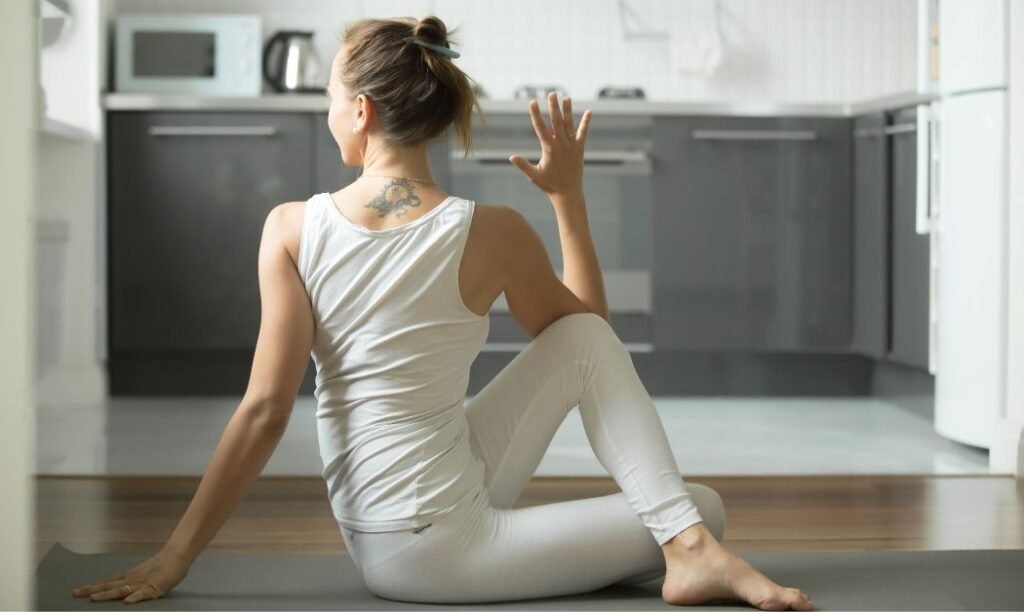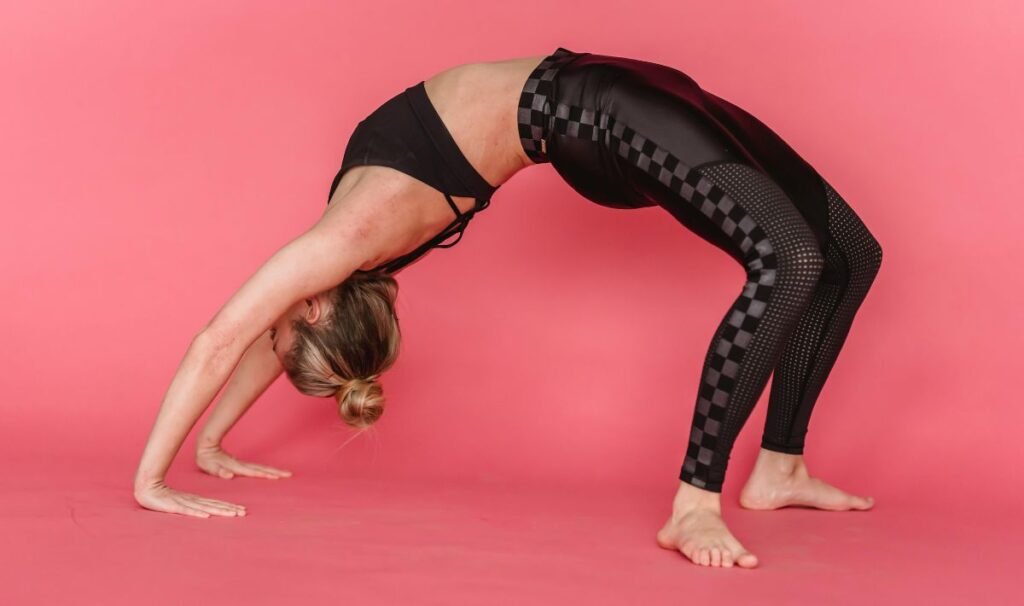Yoga is a practice that brings balance to both body and mind. Among its many poses, Low Lunge (Anjaneyasana) is a gem for those seeking to enhance flexibility, build strength, and find a sense of calm in their routine. This foundational pose, also known as the Low Crescent Lunge, combines the grace of a lunge with the grounding energy of a stretch.
In this blog post, we’ll dive deep into everything you need to know about Low Lunge. From step-by-step guidance to its incredible benefits and creative variations, this guide will leave you feeling inspired and ready to roll out your yoga mat.
What is Low Lunge (Anjaneyasana)?
The Low Lunge yoga position, or Anjaneyasana, is a beginner-friendly pose that stretches the hips, strengthens the legs, and opens the chest. This pose is often included in yoga sequences to improve balance and flexibility while preparing the body for deeper stretches.
The name “Anjaneyasana” is derived from Sanskrit:
- Anjaneya means “Son of Anjani” (a reference to the Hindu deity Hanuman).
- Asana means “pose” or “seat.”
Low Lunge symbolizes humility, strength, and the pursuit of balance, making it as much a mental exercise as a physical one.
How to Do Low Lunge (Anjaneyasana): Step-by-Step Guide
Follow these steps to practice Low Crescent Lunge safely and effectively:
1 . Start in Downward Dog
- Begin in a Downward-Facing Dog pose.
- Ensure your hands are shoulder-width apart and your hips are lifted high, creating an inverted “V” shape.
2. Step Forward
- Step your right foot forward between your hands.
- Ensure the right knee is aligned directly above the ankle for stability.
3. Lower the Back Knee
- Drop your left knee to the mat, keeping your toes tucked or untucked based on comfort.
- Your left leg should form a straight line from hip to knee.
4. Lift Your Torso
- Inhale deeply as you raise your torso upright.
- Rest your hands on your right thigh for support initially.
5. Extend Your Arms
- Reach your arms overhead, palms facing each other.
- Relax your shoulders away from your ears and slightly arch your back for a gentle stretch.
6. Hold the Pose
- Stay in this position for 5-10 breaths, feeling the stretch in your hips and the opening in your chest.
7. Switch Sides
- Return to Downward Dog and repeat on the opposite side.
Readmore: How to Do Tortoise Pose (Kurmasana)
Readmore: Happy Baby Pose (Ananda Balasana)
Benefits
Practicing the Low Lunge yoga position regularly offers numerous physical and mental benefits. Here’s what you can expect:
1 . Improves Hip Flexibility
- Sitting for long hours tightens the hip flexors. Anjaneyasana stretches and lengthens these muscles, enhancing mobility.
2. Strengthens the Legs
- This pose strengthens the quadriceps, hamstrings, and glutes, making it perfect for building lower-body strength.
3. Opens the Chest and Shoulders
- The upward reach of the arms helps open the chest and shoulders, countering the effects of poor posture.
4. Relieves Lower Back Pain
- The stretch in the hips and thighs reduces tension in the lower back, alleviating discomfort.
5. Enhances Balance and Focus
- Maintaining stability in Low Crescent Lunge improves your overall balance and concentration.
6. Boosts Circulation
- This pose stimulates blood flow to the pelvic region, benefiting reproductive and digestive health.
7. Calms the Mind
- Like most yoga poses, Anjaneyasana encourages deep breathing, reducing stress and anxiety.
Variations
If you’re ready to spice things up, try these variations of Low Crescent Lunge to deepen your practice or adapt it to your level.
1 . Twisted Low Lunge
- From the basic Low Lunge position, bring your hands to a prayer pose (Anjali Mudra).
- Twist your torso to the right, hooking your left elbow outside your right knee.
- Hold for 5-8 breaths before switching sides.
2. Side Stretch Lunge
- Extend your arms overhead.
- Lean your upper body to the right for a deep side stretch.
- Repeat on the opposite side.
3. Anjaneyasana with a Backbend
- Deepen the arch of your back by pressing your hips forward and looking up.
- This adds a gentle backbend, enhancing flexibility in the spine.
4. Low Lunge with Quad Stretch
- Bend your back leg and reach your left hand to grab your left ankle.
- Gently pull the ankle closer to your glutes for a quad stretch.
5. Supported Low Lunge
- Place yoga blocks under your hands for added support if your balance feels wobbly.
Readmore: The Benefits of Practicing Yoga Outdoors
Readmore: How Yoga Can Help Improve Your Posture
Mistakes to Avoid
While Anjaneyasana is beginner-friendly, there are a few common pitfalls to watch out for:
- Overarching the Lower Back
- Keep the spine neutral to avoid strain.
- Engage your core muscles to support the pose.
- Misaligned Front Knee
- Ensure the front knee stays directly above the ankle to protect your joints.
- Rushing the Stretch
- Allow your body time to settle into the pose; avoid forcing a deeper stretch.
- Neglecting the Breath
- Maintain steady, deep breaths to enhance relaxation and focus.
Tips for Beginners
If you’re new to yoga or Low Lunge, here are some handy tips:
- Use Props: Place a folded blanket under your back knee for cushioning.
- Start Small: Keep your arms on your front thigh if lifting them overhead feels challenging.
- Take Breaks: Listen to your body and rest as needed.
When to Practice
The Low Crescent Lunge can be practiced:
- As part of a warm-up prepare your hips and legs for more intense poses.
- In the middle of a sequence to improve flexibility and strength.
- At the end of a session for a calming, grounding effect.
Incorporating into Your Yoga Flow
Anjaneyasana works beautifully in various yoga flows, such as:
- Sun Salutations: Include it between poses to stretch and warm up the body.
- Hip-Opening Sequences: Pair it with Pigeon Pose and Butterfly Pose for a comprehensive hip stretch.
- Balance-Focused Flows: Transition into Warrior III or Tree Pose for added challenge.
Final Thoughts
Low Lunge (Anjaneyasana) is more than just a stretch—it’s a pose that connects body, mind, and breath. Whether you’re easing tight hips, building strength, or finding a moment of calm, this versatile pose has something for everyone.
So, roll out your mat, step into your Low Crescent Lunge, and feel the transformation. As you practice, remember: yoga is a journey, not a destination. Take it one breath at a time.
Readmore: Four-Limbed Staff Pose (Chaturanga Dandasana)
Readmore: Standing Split (Urdhva Prasarita Eka Padasana) Yoga Pose
FAQs
1. How long should I hold the Low Lunge (Anjaneyasana) pose?
It’s recommended to hold the pose for 5–10 breaths on each side, which translates to about 30 seconds to 1 minute. However, listen to your body; if you feel comfortable, you can hold it longer to deepen the stretch.
2. Can beginners do Low Lunge (Anjaneyasana)?
Absolutely! Low Lunge is beginner-friendly. You can use props like yoga blocks for balance or place a blanket under your back knee for extra cushioning. The key is to focus on proper alignment and ease into the pose without forcing your body.
3. What’s the difference between Low Lunge (Anjaneyasana) and High Lunge (Crescent Lunge)?
The main difference lies in the position of the back knee. In Low Lunge, the back knee rests on the ground, providing more stability and allowing for a deeper stretch in the hips. In High Lunge, the back knee is lifted off the ground, engaging the legs and core for added strength and balance.

Sonu is a passionate yoga teacher with over 6+ years of experience helping individuals find balance, strength, and inner peace through the transformative power of yoga. As the creator of Pure Yoga Vibes, Sonu shares expert insights, inspiring practices, and a wealth of knowledge to support your wellness journey. Dedicated to creating a space for growth and mindfulness, Sonu’s mission is to make yoga accessible and enjoyable for everyone. For inquiries or collaborations, feel free to reach out at contact@pureyogavibes.com.



